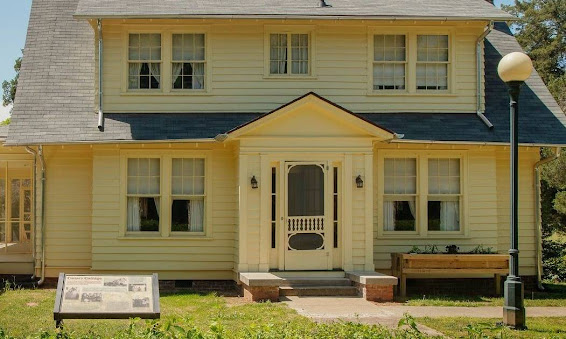Motoring east in North Carolina along U.S. Route 70 from Rowan County, the highway loses its “rural road” personality when it gets paired with U.S. Route 29 headed toward Lexington in Davidson County.
Now a multi-lane highway,
the route becomes Interstate-85 Business (green signs) and zooms across
Guilford County south of High Point. The route even hooks up with extra-busy I-40
for a bit to get through the troublesome, highly congested “malfunction
junction” in Greensboro.
The best advice for
mature drivers is: Keep both hands on the wheel, both eyes on the road, pick a
lane and go with the flow.
U.S. 70 peels off at Wendover Avenue in Greensboro, shedding its “overlaying” highway numbers. Outside of the city, Route 70 becomes known as the “Burlington Road.”
Feel free to pull over in Sedalia and take a breather. There’s a bit of history in this little town as well.
Visit the Charlotte Eugenia
Hawkins Brown Museum, which opened in 1987 as North Carolina’s first state historic
site honoring its African-American heritage.
Lottie Hawkins was born in 1883 near Henderson in Vance County. In 1888, 20 members of the same Hawkins family tree moved to Cambridge, Mass., to seek educational and economic opportunity.
Lottie was 16 when she met Alice Elvira Freeman Palmer, the first woman president of Wellesley (Mass.) College. As the story goes, Brown was babysitting, pushing a stroller and reading aloud from her Latin book (probably writings by Virgil, one of old Rome’s greatest poets).
Palmer overheard her and
took an immediate interest in Lottie Hawkins. On learning that the girl planned
to enter Salem (Mass.) Normal School, a junior college, Mrs. Palmer insisted on
assuming responsibility for Lottie’s expenses.
In 1900, Lottie Hawkins changed her name to Charlotte Eugenia Hawkins, believing her new name was “more cultured.”
During her second year of college, 18-year-old Charlotte Hawkins was recruited by the American Missionary Association (AMA) to return to North Carolina as the teacher at Bethany Institute in Sedalia (a one-room school) to serve 15 rural African-American students. The job paid $25 a month.
The school shutdown after Hawkins’ first year there.
Many in Sedalia wanted to retain Hawkins as a teacher. When Alice Palmer learned of the situation, she got involved and rounded up donors to fund the launch of a new school.
On Oct. 10, 1902, Hawkins
opened the doors of the Palmer Memorial Institute (PMI), a preparatory school
for African-Americans, in Sedalia, naming it after her influential advisor. Both
day students and boarders were accepted.
In 1911, Hawkins married Edward
S. Brown, a fellow teacher, but the relationship ended shortly thereafter. She
would be known at Dr. Charlotte Hawkins Brown for the remainder of her career.
PMI developed a reputation of excellence during Dr. Brown’s tenure as president from 1902-52. In those 50 years, more than 1,000 students earned their diplomas.
PMI continued to operate through 1971, until it was forced to close due to financial difficulties. At that time, the site became basically abandoned, left to decay and deteriorate.
In late 1982, PMI alumni,
including Maria Cole, a niece of Charlotte Brown (wife of Nat King Cole and
mother of Natalie Cole), spearheaded local efforts to restore and preserve the
site.
The State of North
Carolina began to appropriate funding in 1983. Canary Cottage (ca. 1927), Dr.
Brown’s personal residence, has been completely restored and appointed with
both original and period furnishings.






.jpg)




No comments:
Post a Comment